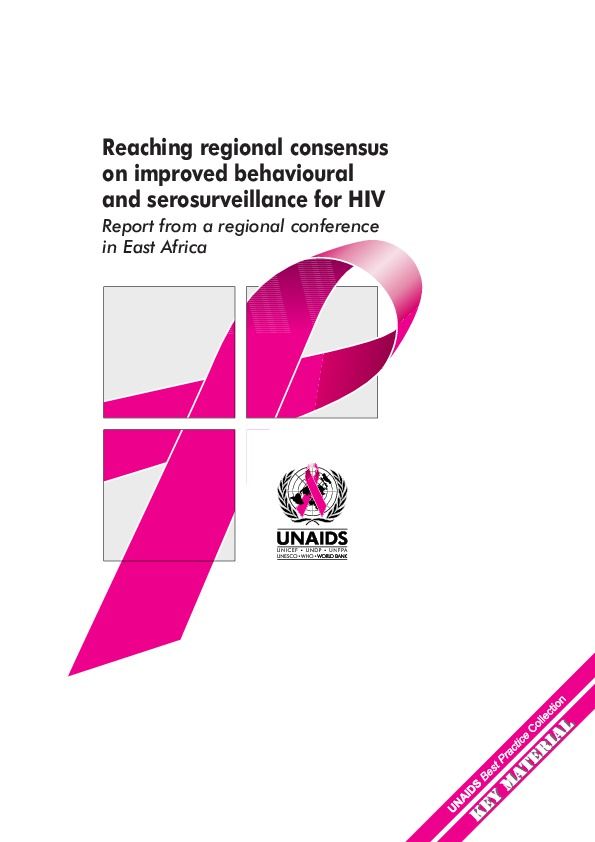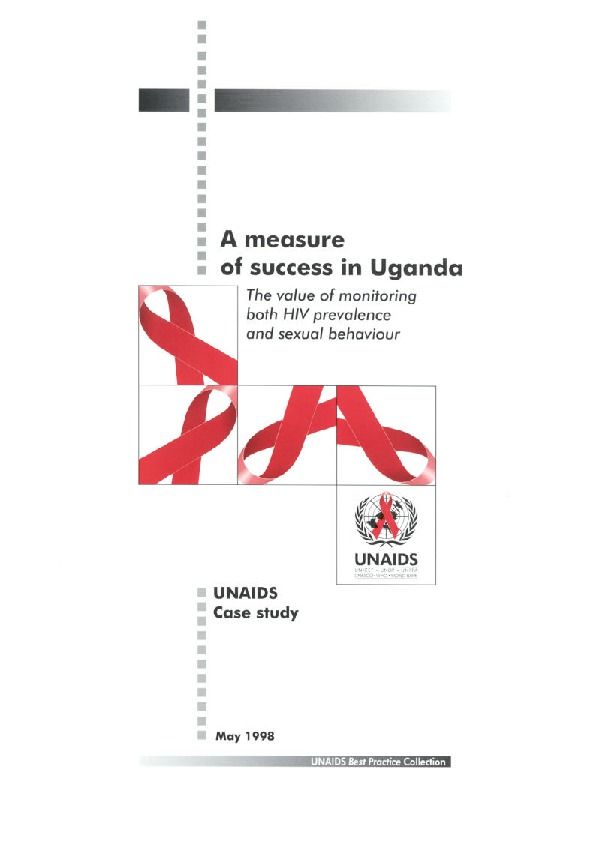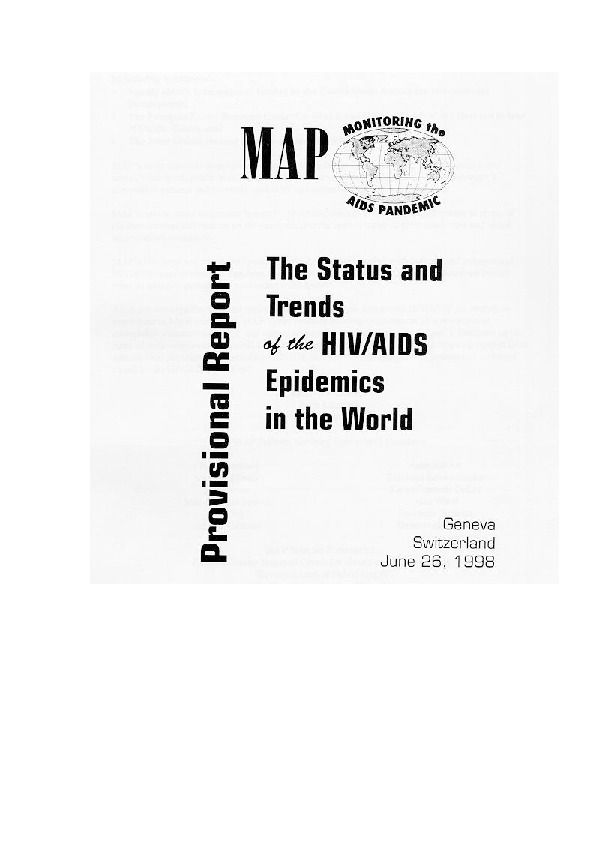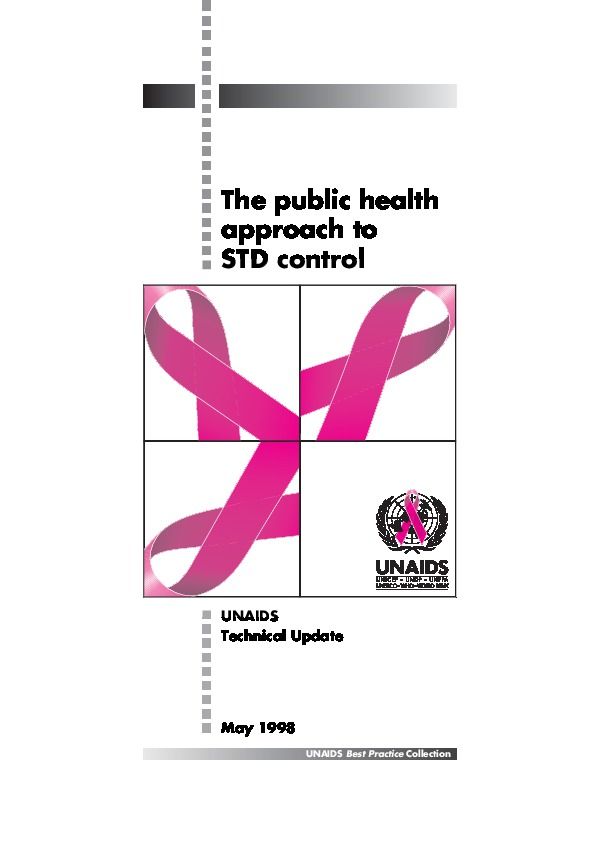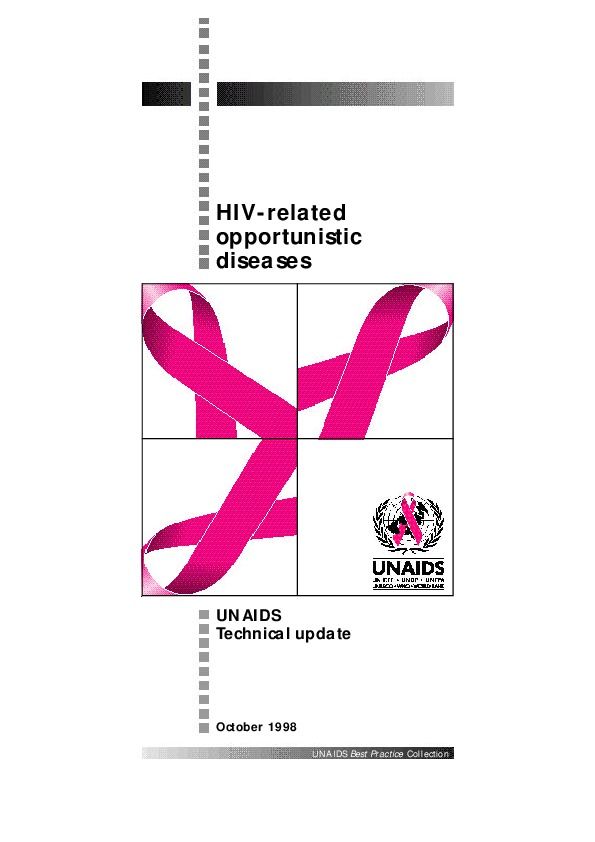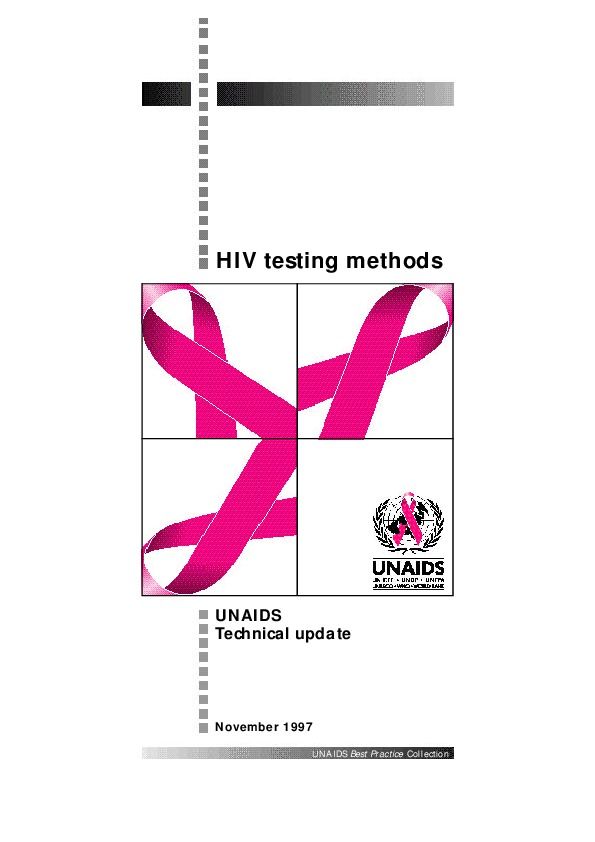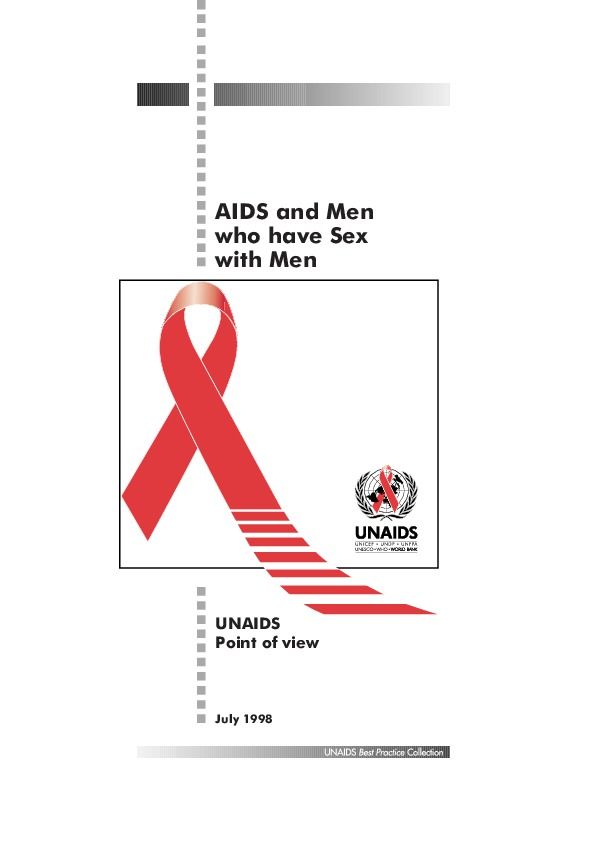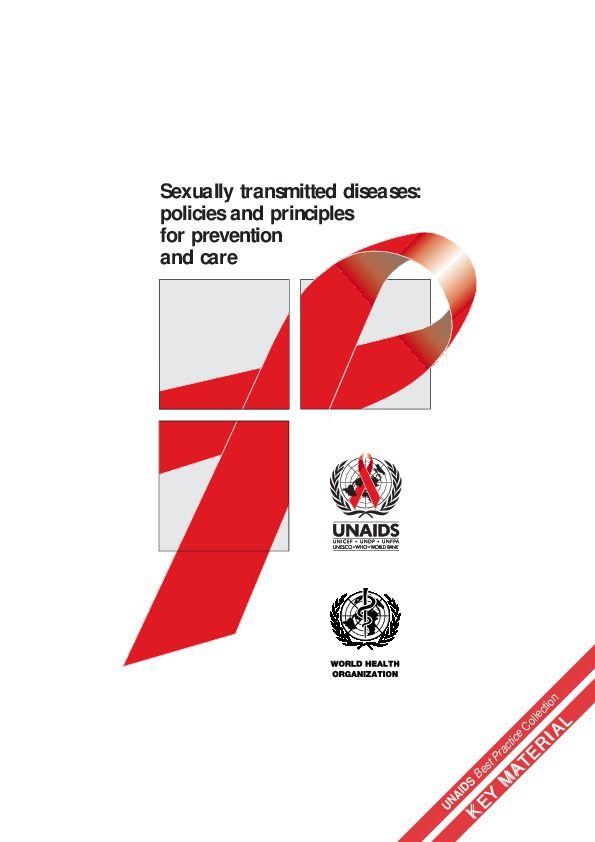Documents
Reaching regional consensus on improved behavioural and sero-surveillance for HIV Report from a regional conference in East Africa
30 мая 1998 года.
This report documents a regional workshop on surveillance systems for HIV held in Nairobi, Kenya, on 10-13 February 1997. The UNAIDS-funded workshop gathered government epidemiologists, AIDS programme managers, and social scientists from Kenya, Malawi, Swaziland, Tanzania, Uganda, Zambia and Zimbabwe as well as specialists from UNAIDS and other partner institutions. The group aimed to present current data and to work together to suggest practical guidelines for improving HIV surveillance systems in a maturing epidemic.
Documents
A measure of success in Uganda: The value of monitoring both HIV prevalence and sexual behaviour
30 мая 1998 года.
This 1998 report from the UNAIDS Best Practice Collection demonstrates the importance of collecting adequate data and undertaking efforts to monitor risk behaviour and HIV prevalence can help make the response to the AIDS epidemic within a country more effective. In Uganda the impact of the epidemic was recognized early and the government and all civil society partners reacted effectively to reduce its impact.
Documents
СПИД и военнослужащие
19 июня 1998 года.
Военнослужащие относятся к группе населения, подвергающейся особому риску заражения сексуально передаваемыми болезнями (СПБ), включая ВИЧ. В мирное время уровень распространения СПБ среди военнослужащих обычно в 2-5 раз выше, чем среди гражданского населения; в периоды военных конфликтов эта разница может возрастать до 50 раз и более.
Documents
The public health approach to Sexually Transmitted Diseases control. STD
23 сентября 1998 года.
Around 340 million new cases of curable sexually transmitted diseases (STDs) are estimated by the World Health Organization (WHO) to have ocurred throughout the world in 1995 in men and women aged 15-49 years. In developing countries, STDs and their complications rank in the top five disease categories for which adults seek health care. In women of childbearing age, STDs - even excluding HIV - are second only to maternal factors as causes of disease, death and healthy life lost.
Documents
HIV related Opportunistic Diseases
02 декабря 1998 года.
People with advanced HIV infection are vulnerable to infections or malignancies that are called “opportunistic” because they take advantage of the opportunity offered by a weakened immune system. Various treatments and prophylaxis—some simple and low-cost, others highly complex and expensive—exist to counter the most common opportunistic diseases, but delivery systems and funding are insufficient in many parts of the world to ensure their universal use.
Documents
Blood Safety and HIV/AIDS
25 января 1999 года.
Millions of lives are saved each year through blood transfusions. Various shortcomings, though, in the way blood is collected, tested (or not tested) for infections such as HIV, and transfused, mean that people in many countries have an increased risk of becoming infected with HIV andother diseases through transfusions. It is estimated that between 5% and 10% of all HIV infections worldwide have been acquired through transfusion of contaminated blood and blood products. If the proper steps are taken, such infections can be easily prevented.
Documents
HIV testing methods
27 января 1999 года.
Since 1985, HIV testing has been essential in securing the safety of blood supplies, monitoring the progress of the epidemic and diagnosing individuals infected with the virus. Various assays are now available, allowing testing strategies to be tailored to the epidemiological conditions and budgets of national health systems. New techniques including simple tests giving instant results hold great promise, but also raise some serious issues for governments and for individuals.
Documents
AIDS and men who have sex with men
19 февраля 1999 года.
Sex between men occurs virtually in most societies. It is often stigmatized by society, and its public visibility, therefore, varies considerably from one country to another. Sex between men often involves anal intercourse, which carries a high risk of HIV transmission. Good HIV programmes addressing men who have sex with men (MSM) are thus vitally important, though up to now they have often been seriously neglected.
Documents
Sexually transmitted diseases:policies and principles for prevention and care
19 мая 1999 года.
The objective of this document is to outline the policies and principles for the prevention and care of sexually transmitted disease (STD) to assist Ministry of Health officials who have the responsibility of developing and implementing STD programmes. Although the document is not intended to be a detailed description of activities that may be used in implementation, some areas have been amplified in annexes to serve as models that can be adapted to suit local situations.

